In today’s economic slowdown, foreclosure has become a common occurrence. The inability to keep up with mortgage payments is the leading cause of this crisis.
Lack of enough understanding of the intricacies of the foreclosure process also plays a major part in the escalating number of foreclosures. Therefore, every homeowner needs to understand this procedure.
This guide aims to provide a comprehensive overview of foreclosure. It will provide a step-by-step breakdown of the foreclosure process, its implications, and how to avoid it.
What Is Foreclosure?
Foreclosure is a legal process lenders initiate when borrowers default on their mortgage payments. The lender/mortgage company seeks to recover the loan balance by forcing the sale of the asset used as collateral for the loan. The collateral is usually the borrower’s home.
The Role of Predatory Lending in the Foreclosure Process
Predatory lenders usually offer loans with high interest rates and hidden fees. This makes it challenging for borrowers to meet their repayment obligations. They typically target borrowers who are in a tight financial spot. Borrowers with little financial knowledge also fall prey.
These lenders trick borrowers into taking out loans by using misleading methods. High interest rates and extra fees are usually buried in the loan agreement’s fine print. That way, borrowers don’t realize the financial mess they’re getting into.
Another common practice in predatory lending is loan flipping. In this practice, lenders refinance borrowers’ loans with new ones with even higher fees.
How Does Foreclosure Work?
Though the rules and timelines of foreclosure may differ from state to state, the general framework is the same. It typically follows these steps:
The Borrower Misses Mortgage Payments
The process begins when the borrower misses a mortgage payment – the first sign of financial distress. At this stage, the lender usually makes contact to remind the borrower of the missed payment. The communication is through a missed payment notice.
Issuance of a Demand Letter
If the borrower defaults a second mortgage payment, the lender sends a demand letter. The communication serves as a formal request for payment.
Also known as a notice to accelerate, this letter also stresses the urgency of addressing the missed payments to avoid foreclosure. The borrower has a specified period, typically around 30 days, to respond and resolve the delinquency.
The Lender Sends a Notice of Default
If the borrower has more missed payments, the lender files and sends a notice of default after 90 to 180 days of non-payment. This legal document states that the borrower has not been making their mortgage payments on time.
It also offers a reinstatement period. This is usually around 30 to 90 days, depending on local regulations. During this time, the borrower is expected to bring the loan back into good standing.
Depending on state laws and the loan agreement, the notice of default may come after just one missed payment or several missed payments. This is especially the case with predatory lending.
The Lender Is Permitted to Foreclose If the Loan Isn’t Brought to a Good Standing
Failure to bring the loan current within the specified period grants the lender permission to foreclose. The following steps will depend on whether the foreclosure is judicial or nonjudicial.
The Foreclosed Property Is Sold at a Foreclosure Auction
The next step is the foreclosure auction. The property is publicly advertised and sold to the highest bidder. The auction proceeds pay off the mortgage, interest, and accrued legal costs.
If the property does not find a buyer at the auction, it becomes real estate-owned (REO). This happens when no bid exceeds the lender’s or the auctioneer’s minimum price. Real estate-owned means the lender becomes the owner of the property.
A foreclosed property can be sold under market value. This means the proceeds may not be enough to cover the mortgage debt and all other accrued costs. In such a case, the borrower will still owe the difference to the lender. This is known as a deficiency judgment.
Sometimes, the lender may prefer to issue a deed instead of foreclosure. Here, the borrower transfers legal ownership of the house to the lender. The borrower is then released from any remaining debt.
Possibility of Redemption After Auction
Following the auction, the borrower may have a redemption period of up to seven months. During this period, the borrower can reclaim the property by paying the successful auction bid price. The borrower will also shoulder any additional costs incurred by the lender.
However, this opportunity is only available in some states. It is also often not feasible. This is because the borrower will have already been in financial difficulties to reach the point of foreclosure.
What Are the Different Types of Foreclosure?
There are two major types of foreclosure: judicial foreclosure and nonjudicial.
Judicial Foreclosure
Judicial foreclosure is the most prevalent type. It incorporates the court system. Here, the lender files a lawsuit against the borrower due to the latter’s inability to meet the mortgage obligations.
A legal notice is served to the borrower, who is allowed a certain period to respond with a payment, usually around 30 days. If the borrower does not respond within that period, the court will rule in favor of the lender.
Permission to auction the property is then granted. These auctions are typically conducted by a local court or the sheriff’s office.
Judicial foreclosure tends to take longer than nonjudicial foreclosure. The long process is due to the legal elements put in place to ensure fairness.
The following states employ the judicial foreclosure process as the primary means to deal with defaulted mortgages.
- Connecticut, Delaware
- District of Columbia
- Florida
- Hawaii
- Illinois
- Indiana
- Iowa
- Kansas
- Kentucky
- Louisiana
- Maine
- New Jersey
- New Mexico
- New York
- North Dakota
- Ohio
- Oklahoma
- Pennsylvania
- South Carolina
- Vermont
- Wisconsin
These states believe involving the courts ensures a fair process for all parties.
Nonjudicial Foreclosure
Non judicial foreclosure is quicker than Judicial foreclosure and is only allowed by some states. It enables the lender to bypass the step of filing a lawsuit against the borrower. The lender is only required to issue a notice of default followed by a notice of sale.
The borrower is allotted a window to rectify the situation. If no resolution is reached within the period, the property is sold to the highest bidder at a public auction.
Lenders in applicable states prefer nonjudicial foreclosures. However, the rapid process leaves less room for borrowers to rectify their default. It also offers fewer legal protections.
The following states primarily use the nonjudicial foreclosure process:
- Alabama
- Alaska
- Arizona
- Arkansas
- California
- Colorado
- District of Columbia
- Georgia
- Hawaii
- Idaho
- Maryland
- Massachusetts
- Michigan
- Minnesota
- Mississippi
- Missouri
- Montana
- Nebraska
- Nevada
- New Hampshire
- North Carolina
- Oregon
- Rhode Island
- South Dakota
- Tennessee
- Texas
- Utah
- Virginia
- Washington
- West Virginia
- Wyoming
In New Mexico, non judicial foreclosure may be used for loans taken past 2006. Colorado’s and Maryland’s non judicial foreclosure usually have some court supervision. Judicial foreclosure is also common in Hawaii and the District of Columbia.
Power of sale and strict foreclosure fall under non judicial foreclosures. Also known as statutory foreclosure, power of sale foreclosure applies if the mortgage contract has a power of sale clause, meaning the borrower forfeits their rights to a judicial proceeding after the passing of an established waiting period. In strict foreclosure, the court transfers the lender’s legal rights to the property without a sale occurring.
What Are the Consequences of Foreclosure?
Foreclosure comes with immediate and long-lasting consequences. These include the following:
Loss of Your Home
This is the most apparent and immediate consequence. It is a devastating experience that can be emotionally challenging and life-altering. The turmoil can be distressing, especially for families with children. Additionally, losing a home also means losing a significant financial investment.
Damage to Your Credit Score
Foreclosure can pull down your credit score, the numerical representation of your creditworthiness. Lenders look at this score to decide whether or not to provide you with financial services, including mortgages.
A foreclosure can reduce your credit score by as much as 150 points. The damage can remain on your credit report for seven years. It will impose difficulties when attempting to secure a new mortgage or rent an apartment.
If you’re able to secure a mortgage after a foreclosure, it’s likely to come with higher interest rates and unfavorable terms.
Even worse, a low credit score can affect other aspects of your life. You may find it harder to rent an apartment. Employers also may check credit history, especially for roles involving financial responsibility.
Difficulty Getting a New Loan
A foreclosure will not only affect your ability to secure a new mortgage but other types of loans as well. Lenders will consider you a high-risk borrower. Therefore, they may impose higher interest rates or not approve your loan altogether.
Legal Fees
Legal costs vary depending on the complexity of the case, the attorney’s rate, and the length of the foreclosure process. They can include court costs, attorney’s charges, filing fees, and costs for other necessary legal services.
Emotional Stress
Losing your home can be emotionally stressful. You may feel overwhelmed with feelings of failure, shame, and sadness. This can cause disorders such as depression.
How to Avoid Foreclosure
Various strategies and resources can help you reduce the likelihood of foreclosure. The key is to educate yourself, act early, and take advantage of available resources. Below is a detailed look at some of the steps to avoid foreclosure:
Get Help Early
Time is of the essence when you’re facing foreclosure. When you realize you’re having trouble making mortgage payments, seek help immediately. There are various resources designed to help homeowners stay clear of foreclosure. Also, engage a housing counselor or nonprofit organization specializing in foreclosure prevention.
Make a Budget
Having a budget in place is essential. It will allow you to monitor your income and expenditures. This can help you cut your spending and save money for loan repayment. A planned-out budget can also prove your commitment to meet the loan obligations to your lender.
Contact Your Lender
Most lenders, except predatory lenders, don’t want to go through the hassle of foreclosure. Looking for a solution that works for both parties is in their best interest.
Contact your lender as soon as you foresee payment difficulties. They might offer options like forbearance, where you temporarily pause payments, or modify the loan.
Consider a Loan Modification
A modification involves changing the loan terms to make payments more manageable. It could include rescheduling payments, extending the term, reducing interest rates, or even principal reduction.
It is a good option if you’ve fallen behind on mortgage payments but can afford to make a reduced payment. Note that loan modifications require documentation and proof that you can make the adjusted payments. This is where your budget and financial records come in handy.
Short Sale Your Home
If you can’t make payments and don’t qualify for a loan modification, a short sale might be the best option. A short sale means selling your home for less than what is owed on the mortgage loan.
If the lender agrees to accept the short sale, you won’t be responsible for any additional money owed. However, a shorter sale can harm your credit score.
Foreclosure Prevention Programs
Foreclosure prevention programs are available at state and local levels. Nonprofit organizations also offer foreclosure prevention programs. These programs assist with mortgage payments and counsel those struggling to repay their loans.
The U.S. Department of Housing and Urban Development (HUD) offers free counseling services to homeowners facing the threat of foreclosure.
The Home Affordable Modification Program (HAMP) is another noteworthy program. The program is designed to help borrowers reduce their monthly mortgage payments.
Foreclosure Impact on Communities
Foreclosure isn’t just challenging for borrowers. It also has a significant impact on the community. Vacant homes emerging as a result of foreclosure can degrade the aesthetic appeal of neighborhoods. These structures usually attract squatters and criminals.
Foreclosures can also lead to the depreciation of homes in a community. When the aesthetic appeal of a neighborhood is compromised, property values decline.
The Legal Homeowner’s Rights in Foreclosure
Homeowners enjoy several legal rights during the foreclosure process. These include the following:
The Right to a Hearing
Borrowers are entitled to a hearing before a judge to challenge the foreclosure process. This judicial proceeding ensures the legitimacy of the foreclosure process. It also provides borrowers with an opportunity to present their case.
The right mainly applies to judicial foreclosure states. However, borrowers in nonjudicial foreclosure states can also file a lawsuit to challenge the foreclosure. That is if they believe it’s being carried out improperly.
The Right to Redeem Their Home
Borrowers reserve the right to redeem their home during a specific period after the foreclosure sale. During this period, they are allowed to pay off the full loan amount to retain their home. To do this, they must pay off the full amount of the outstanding loan, accrued interest, and other costs.
The Right to a Short Sale
Borrowers also have the right to conduct a short sale as an alternative to foreclosure. They need to demonstrate financial hardship to qualify.
Knowing your legal homeowner’s rights can give you a better chance of coming out of the foreclosure process in a better position. It is essential to research your state’s laws. Consulting legal professionals can help. Additionally, keep track of court orders and contact lenders regarding payments.
The Impact of Foreclosure on the Borrower’s Mental and Physical Health
The foreclosure process can significantly affect the borrower’s mental and physical well-being. Financial worries and uncertainty can lead to anxiety, depression, and sleeplessness.
The mental health issues, if persistent, can then manifest physically. High blood pressure and heart conditions might develop due to stress.
- Related Topic: Preforeclosure
Key Takeaways
Besides financial effects, a foreclosure can impact the borrower’s mental and physical health. It can also affect the community where the property is. In addition, it leads to dishonest lending practices, exposing borrowers to predatory lenders.
But foreclosure prevention is possible. It is essential to educate yourself on the foreclosure process and your legal homeowner’s rights. Also, understand your options. These include seeking professional help and utilizing available foreclosure prevention programs from the government and nonprofits.












